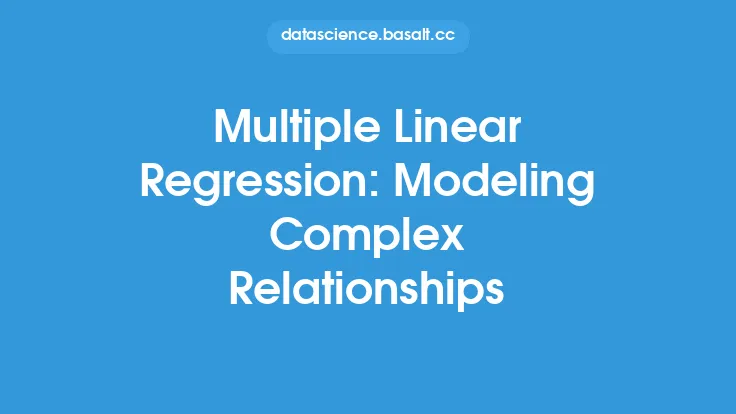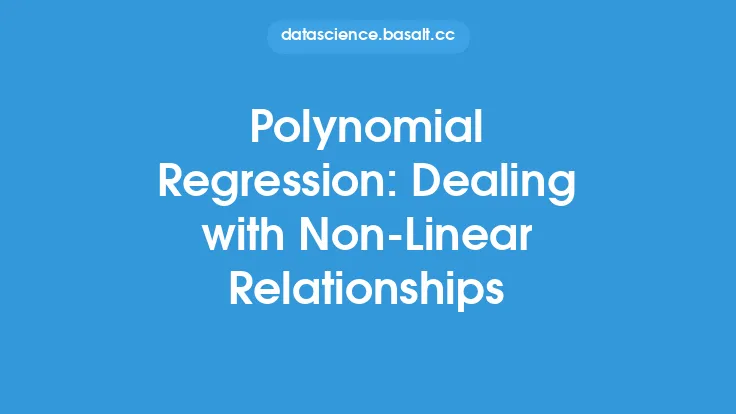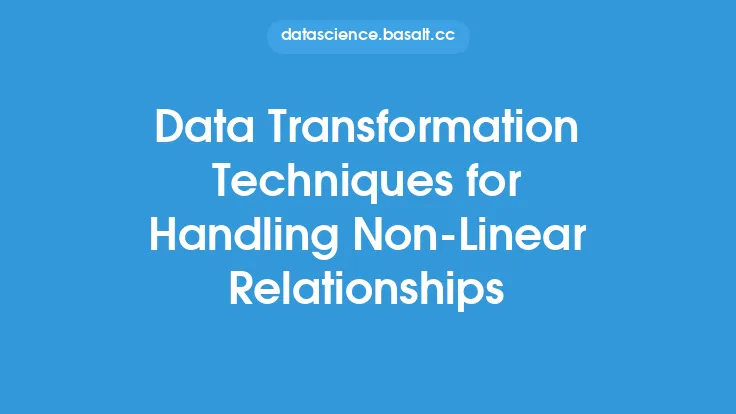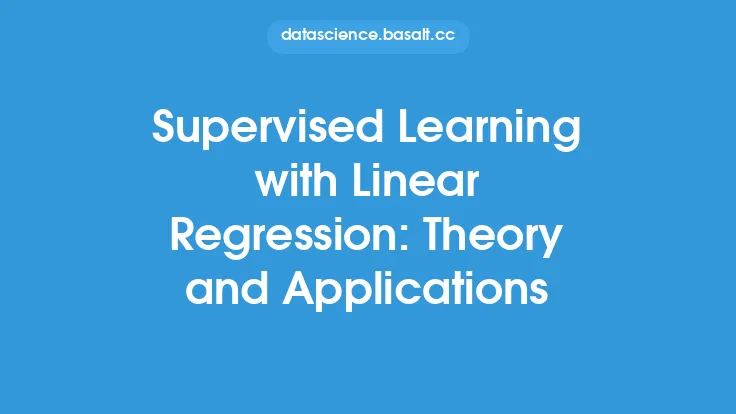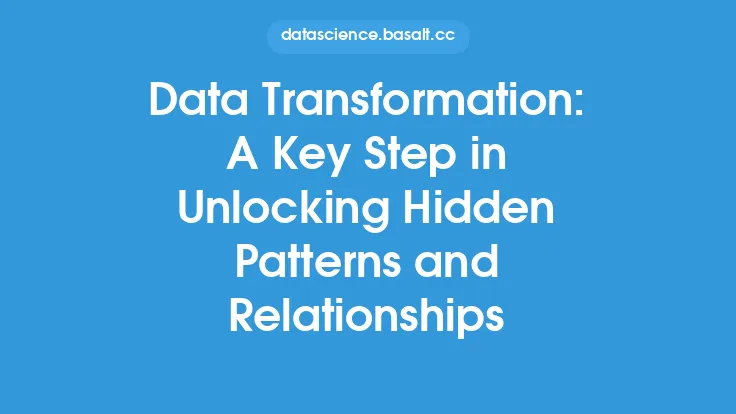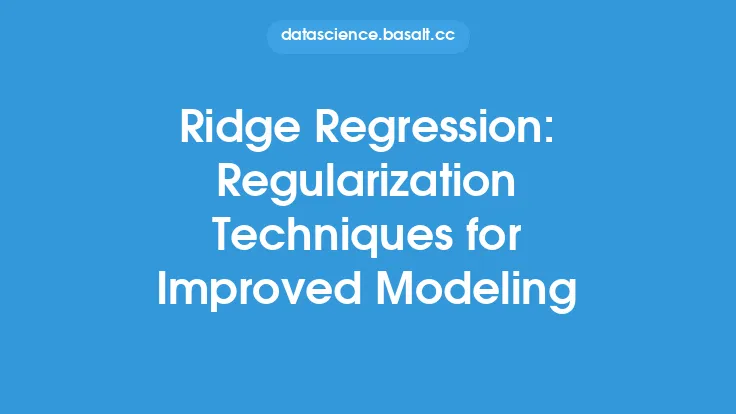Non-linear regression is a form of regression analysis in which the relationship between the independent variables and the dependent variable is modeled using a non-linear function. This type of regression is used when the data does not follow a linear pattern, and the goal is to find the best-fitting non-linear curve that describes the relationship between the variables.
Introduction to Non-Linear Regression
Non-linear regression is a powerful tool for modeling complex data relationships. It is commonly used in various fields, including physics, engineering, economics, and biology, where the relationships between variables are often non-linear. Non-linear regression can be used to model a wide range of relationships, from simple curves to complex surfaces. The key characteristic of non-linear regression is that the relationship between the independent variables and the dependent variable is not linear, meaning that the slope of the curve is not constant.
Types of Non-Linear Regression
There are several types of non-linear regression, including:
- Polynomial regression: This type of regression involves modeling the relationship between the independent variables and the dependent variable using a polynomial function. Polynomial regression can be used to model relationships that are non-linear but still relatively simple.
- Logistic regression: This type of regression is used to model binary outcomes, such as 0 or 1, yes or no, etc. Logistic regression is commonly used in machine learning and data analysis.
- Exponential regression: This type of regression involves modeling the relationship between the independent variables and the dependent variable using an exponential function. Exponential regression is commonly used to model population growth, chemical reactions, and other processes that involve exponential change.
- Sigmoidal regression: This type of regression involves modeling the relationship between the independent variables and the dependent variable using a sigmoidal function. Sigmoidal regression is commonly used to model relationships that have a S-shaped curve.
Non-Linear Regression Models
Non-linear regression models can be broadly classified into two categories: parametric and non-parametric. Parametric models assume a specific functional form for the relationship between the independent variables and the dependent variable, while non-parametric models do not make any assumptions about the functional form.
- Parametric models: Parametric models are based on a specific functional form, such as a polynomial or exponential function. These models are commonly used when the relationship between the variables is well understood and can be modeled using a specific functional form.
- Non-parametric models: Non-parametric models do not assume a specific functional form for the relationship between the independent variables and the dependent variable. These models are commonly used when the relationship between the variables is complex and cannot be modeled using a specific functional form.
Estimation and Inference in Non-Linear Regression
Estimation and inference in non-linear regression involve finding the best-fitting non-linear curve that describes the relationship between the variables. This is typically done using maximum likelihood estimation or least squares estimation. Maximum likelihood estimation involves finding the parameters that maximize the likelihood of observing the data, while least squares estimation involves finding the parameters that minimize the sum of the squared errors.
Challenges in Non-Linear Regression
Non-linear regression can be challenging due to the complexity of the relationships being modeled. Some of the common challenges in non-linear regression include:
- Non-linearity: Non-linear regression involves modeling non-linear relationships, which can be challenging due to the complexity of the relationships.
- Non-normality: Non-linear regression often involves non-normal data, which can make estimation and inference challenging.
- Correlation: Non-linear regression often involves correlated data, which can make estimation and inference challenging.
- Overfitting: Non-linear regression models can be prone to overfitting, especially when the models are complex and have many parameters.
Applications of Non-Linear Regression
Non-linear regression has a wide range of applications in various fields, including:
- Physics and engineering: Non-linear regression is commonly used in physics and engineering to model complex relationships between variables, such as the relationship between stress and strain in materials.
- Economics: Non-linear regression is commonly used in economics to model complex relationships between economic variables, such as the relationship between income and consumption.
- Biology: Non-linear regression is commonly used in biology to model complex relationships between biological variables, such as the relationship between dose and response in pharmacology.
- Machine learning: Non-linear regression is commonly used in machine learning to model complex relationships between variables, such as the relationship between features and target variables in classification and regression problems.
Software for Non-Linear Regression
There are several software packages available for non-linear regression, including:
- R: R is a popular programming language and software environment for statistical computing and graphics. R has several packages available for non-linear regression, including the `nls` package.
- Python: Python is a popular programming language and software environment for data analysis and machine learning. Python has several libraries available for non-linear regression, including the `scipy` library.
- MATLAB: MATLAB is a popular programming language and software environment for numerical computing and data analysis. MATLAB has several toolboxes available for non-linear regression, including the `Statistics and Machine Learning Toolbox`.
- SAS: SAS is a popular software package for data analysis and statistical computing. SAS has several procedures available for non-linear regression, including the `NLIN` procedure.
Conclusion
Non-linear regression is a powerful tool for modeling complex data relationships. It is commonly used in various fields, including physics, engineering, economics, and biology, where the relationships between variables are often non-linear. Non-linear regression can be used to model a wide range of relationships, from simple curves to complex surfaces. The key characteristic of non-linear regression is that the relationship between the independent variables and the dependent variable is not linear, meaning that the slope of the curve is not constant. Non-linear regression involves finding the best-fitting non-linear curve that describes the relationship between the variables, and it can be challenging due to the complexity of the relationships being modeled. However, with the right software and techniques, non-linear regression can be a powerful tool for data analysis and modeling.
